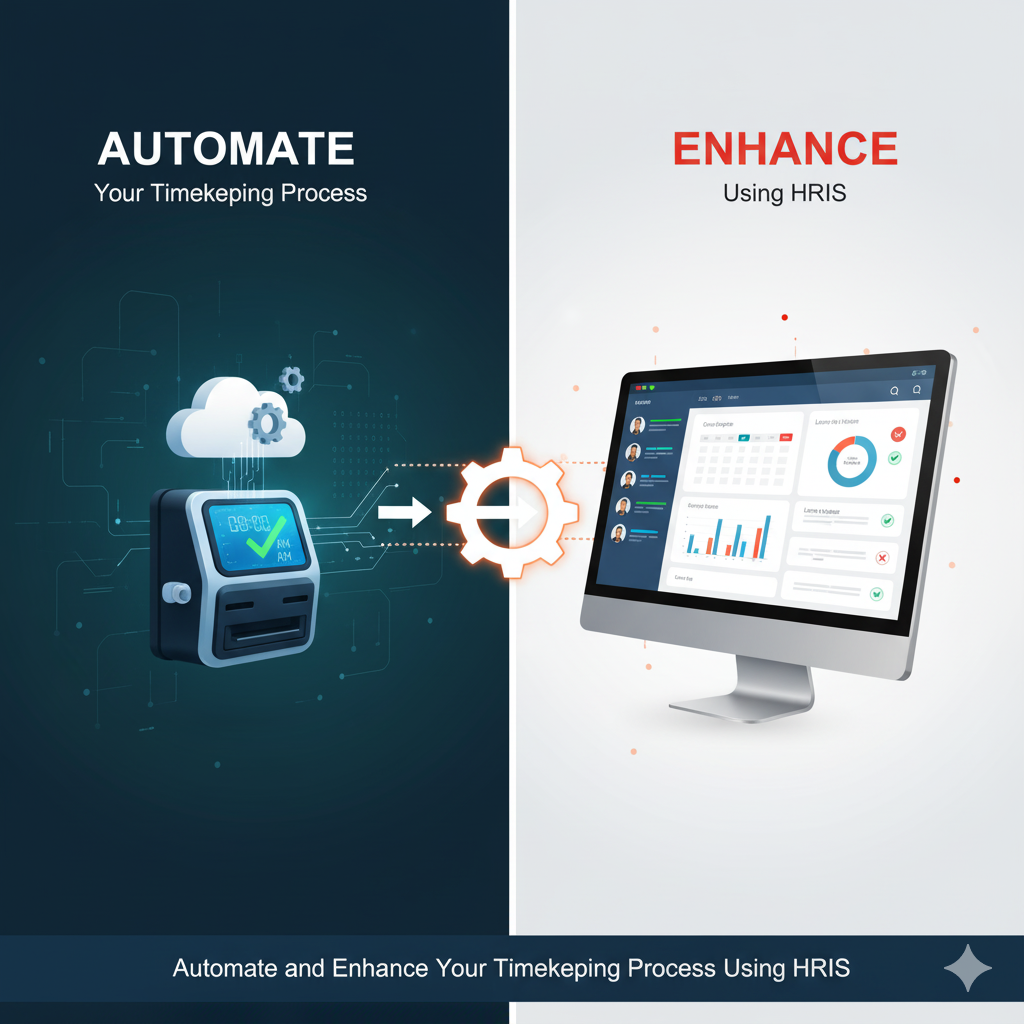Address
Kaypian, San Jose Del Monte City, Bulacan Philippines
Work Hours
Monday to Friday: 8AM - 6PM
Weekend: 10AM - 5PM
Address
Kaypian, San Jose Del Monte City, Bulacan Philippines
Work Hours
Monday to Friday: 8AM - 6PM
Weekend: 10AM - 5PM


Integrated HR. Accurate Payroll.


Integrated HR. Accurate Payroll.

For any business, accurate timekeeping is the backbone of efficient payroll, employee productivity, and labor compliance. Yet, many organizations in the Philippines still rely on manual time logs or outdated spreadsheets to track attendance — a method prone to errors, inefficiencies, and disputes.
Fortunately, there’s a smarter way to manage employee attendance: by using a Human Resource Information System (HRIS) to automate and enhance your timekeeping process.
An HRIS (Human Resource Information System) is a digital platform that manages and automates various HR functions — including employee attendance, scheduling, payroll, and reporting.
When integrated with a timekeeping module, an HRIS automatically records employees’ clock-in and clock-out times, tracks absences or overtime, and syncs data directly with payroll.
This means no more manual computations, missing logs, or duplicated records — just accurate, real-time data in one centralized system.
Before automation, HR teams often face these common problems:
⏰ Time theft and buddy punching — employees clocking in for others
📄 Lost or inaccurate records due to paper-based systems
🧮 Manual errors in payroll computations
😩 Time-consuming data entry every cutoff
⚠️ Non-compliance with labor laws because of incomplete attendance tracking
These issues not only cause administrative headaches but also increase labor costs and reduce employee trust in HR processes.
Implementing an HRIS timekeeping system transforms how your organization manages attendance. Here’s how:
✅ 1. Seamless Attendance Tracking
HRIS platforms can integrate with biometric devices, RFID scanners, or mobile attendance apps. This automatically records employee attendance and syncs it with your database in real time.
⚙️ 2. Automatic Overtime and Leave Calculations
No more manual computations. The HRIS automatically calculates overtime, undertime, and leave credits based on your company policies, ensuring fair and transparent time tracking.
💾 3. Centralized Data for Payroll Integration
All timekeeping data connects directly to payroll. When payday arrives, the system automatically pulls attendance data, minimizing discrepancies and delays.
📊 4. Comprehensive Reports and Analytics
HRIS tools provide customizable reports on attendance trends, absenteeism rates, and shift adherence. This empowers HR managers to make data-driven decisions and optimize workforce performance.
🔒 5. Compliance and Accuracy
Automated timekeeping helps maintain compliance with Philippine labor laws — especially regarding working hours, overtime, and rest days. It also reduces the risk of errors that can lead to disputes or penalties.
| Benefit | Description |
| Time Efficiency | Automates daily attendance recording and reporting |
| Improved Accuracy | Eliminates manual encoding errors |
| Cost Savings | Reduces administrative workload and time theft |
| Transparency | Promotes accountability through accurate logs |
| Compliance | Ensures labor law and company policy adherence |
When selecting an HRIS to automate your timekeeping process, look for these features:
🔁 Integration with payroll and attendance devices
📱 Mobile attendance tracking for remote or field employees
🧮 Automatic leave and overtime computation
📑 Customizable attendance policies
📈 Real-time dashboards and analytics
🧠 User-friendly interface and reliable support
In today’s fast-paced business world, manual timekeeping is no longer practical. By automating your timekeeping process using HRIS, you can reduce human error, ensure compliance, and empower your HR team to focus on strategic goals rather than repetitive tasks.
Whether your company has 20 or 2,000 employees, an HRIS with automated timekeeping is an investment that saves time, builds trust, and drives productivity.